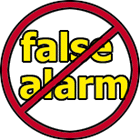 NESA is a active partner in the effort to reduce false alarms.
NESA is a active partner in the effort to reduce false alarms.
We support the False Alarm Reduction Association (FARA) thru attendance at annual symposiums and contributions to the FARA Institute. The FARA Institute allows public safety members to attend symposiums by covering travel expenses.
NESA has also worked with FARA to create a Guide-to-Alarm-Equipment and a FARA-NESA Video Verification Standard.
NESA Position Paper on False Alarm Reduction
Summary: NESA encourages committed effort to reduce false alarms by state associations, alarm dealers and alarm users.
Background: False alarms waste resources and can be effectively reduced by implementing proven procedures and best practices.
The Problem:
- Increased demand on public safety agencies for homeland security and other duties, difficulty in filling all the budgeted positions, and sizeable numbers of staff who have been called to serve in the military reserves, can easily cause dissatisfaction with an increased or even a stable amount of false alarms.
- Alarm users purchase an alarm to be safe and most feel that as taxpayers they deserve public safety response to alarms.
- While many alarm dealers are proactive in efforts to reduce false alarms, others are not.
Recommendations:
- Each community should develop and enforce an alarm ordinance that is developed in a cooperative effort by local representatives of public safety, alarm users and alarm dealers. (see NESA Position Paper on Alarm Ordinances for more info)
- All alarm dealers should:
- Provide train the trainer classes so those employees, who will teach alarm users how to properly operate their alarm systems, will be more effective.
- Inform alarm users about alarm ordinances and assist them to register their alarm systems.
- Know their alarm dispatch rate.
- Implement a program to track false alarms and follow-up on each false alarm.
- Use panels that comply with the SIA CP-01 standard on all new or troubled systems
- Implement two call or enhanced call verification for all burglar alarm systems unless the alarm user opts out by providing public safety with compelling evidence that an exception should be made.
- Comply with local and state licensing requirements.
- Seek out local public safety officials to offer assistance including participating in Crime Solvers or any other organizations that show support for public safety.
- Join, participate in, and utilize the information provided by the False Alarm Reduction Association (FARA). FARA is an association primarily of persons employed by government and public safety agencies in charge of, or working in, False Alarm Reduction Units. Its goal is to assist these individuals in reducing false alarms for their jurisdiction.
- Each alarm association should:
- Support the adoption of effective alarm ordinances developed in a cooperative effort.
- Conduct training that focuses on the impact of and solutions to false alarms.
- Seek out public safety officials to offer assistance with programs and problem alarm sites.
- Provide technical training to public safety alarm ordinance professionals.
- Each alarm user should:
- Ensure that all who have a key to the alarm site have appropriate training
- Notify alarm companies of changes in construction, displays and phone service that may impact the alarm systems.
- Follow-up on each false alarm to determine its cause.
- Allow two call or enhanced verification for all burglar alarm systems.
Educational Alarm Video Available for Industry, Police and Customer Distribution Video educates users on reducing false alarms
NESA has made a video to educate alarm users available on it web site.
The video which was produced as a cooperative effort led by the North Texas Alarm Association (NTAA) is also available on DVD.
Copies Available
Members of the following sponsoring associations can order copies at a member price by visiting the member’s only section of their association’s web site.
- National Electronic Security Alliance (NESA)
- North Texas Alarm Association (NTAA)
- Texas Burglar & Fire Alarm Association (TBFAA)
- False Alarm Reduction Association (FARA)
- Security Industry Alarm Coalition (SIAC)
- Houston Gulf Coast Alarm Association (HGCAA)
- South Texas Alarm Association (STAA)
Non Members can order the video directly from the NTAA at the standard rate.
